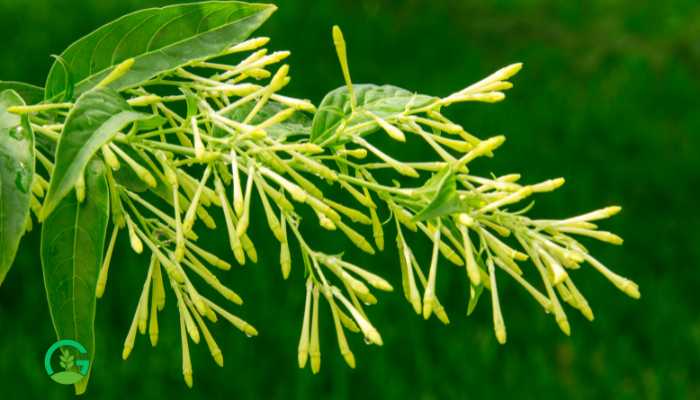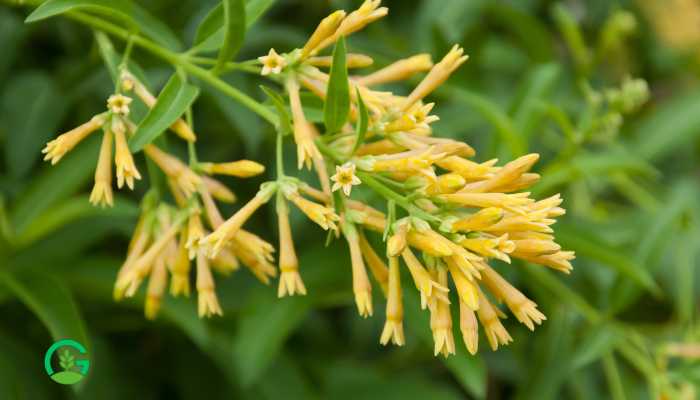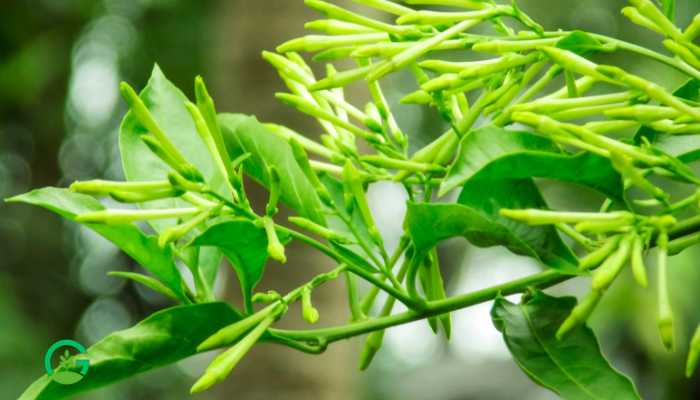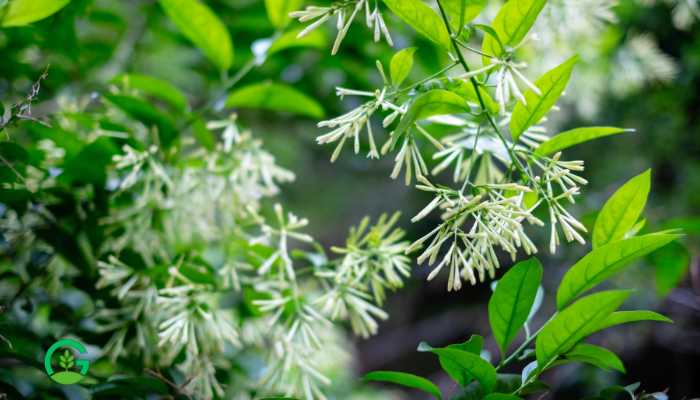Have you ever wandered through a garden at night and been captivated by the lovely scent whispering from the shadows?
Chances are, you have encountered the Raat Rani flower. This mysterious, night-blooming flower, also known as night-blooming jasmine, is famous for its powerful fragrance that fills the air after sunset.
In this article, we will learn how to grow and care for this interesting plant to ensure that your garden can enjoy its fragrance at night.
Raat Rani Flower Table of Contents
Understanding the Raat Rani Flower
The Raat Rani flower (Cestrum nocturnum) is a member of the nightshade family. Originating from the West Indies, it has now found its way into gardens worldwide. What makes Raat Rani unique is its habit of blooming at night and emitting a strong, sweet fragrance that can be smelled from a distance.
The flowers are small, tubular, and usually white or greenish-white, which makes them less visually striking but highly valued for their scent.
Choosing the Right Location
To successfully grow Raat Rani, you need to choose the right spot in your garden. Think of it as finding the perfect home for a friend who thrives in a specific environment.
Raat Rani loves sunlight but can also tolerate partial shade. Ideally, it should be planted in a location where it gets at least 4-6 hours of direct sunlight each day. Additionally, consider planting it near a window or patio to enjoy its fragrance.

Planting Raat Rani
Planting Raat Rani isn’t complicated, but there are some key steps to follow for the best results. Start by digging a hole twice as wide and just as deep as the root ball. Place the plant in the hole, ensuring the top of the root ball is level with the soil surface.
Fill the hole with soil and press it down gently to remove air pockets. Water thoroughly after planting to help the plant settle in its new home.
Watering Requirements
Watering is crucial for the health of your Raat Rani flower. This plant prefers moderately moist soil. During the growing season, water it regularly to keep the soil consistently damp but not waterlogged.
In winter, reduce the watering frequency as the plant’s growth slows down. Remember, overwatering can lead to root rot, which is a common problem for many garden plants.
Soil and Fertilizer Needs
Raat Rani isn’t too picky about soil, but it thrives best in well-draining soil rich in organic matter. You can improve your garden soil by adding compost or aged manure.
As for fertilizers, a balanced, slow-release fertilizer applied once a month during the growing season will keep your Raat Rani blooming beautifully. Be cautious not to over-fertilize, as this can lead to lush foliage at the expense of flowers.

Pruning and Maintenance
Regular pruning helps maintain the shape and health of your Raat Rani plant. Prune it in early spring or after the flowering season ends. Remove any dead or damaged branches and trim back excessive growth to encourage new blooms. Think of pruning as giving your plant a refreshing haircut that keeps it looking its best.
Dealing with Pests and Diseases
Like any other garden plant, Raat Rani is susceptible to pests and diseases. Common pests include aphids, spider mites, and whiteflies. These can be controlled with regular inspections and appropriate treatments like insecticidal soap or neem oil. Additionally, ensure good air circulation around the plant to prevent fungal diseases such as powdery mildew.

Propagation Techniques
If you want more Raat Rani plants, you can propagate them through cuttings or seeds. Cuttings are often the preferred method as they tend to root easily. Take a healthy stem cutting, dip it in rooting hormone, and plant it in a pot with well-draining soil. Keep the soil moist and within a few weeks, you’ll notice new roots developing.
Seasonal Care
Each season brings different care needs for your Raat Rani. In spring, focus on planting and fertilizing. Summer requires diligent watering and pest control. Autumn is the time to prune and prepare the plant for winter. In winter, protect the plant from frost by moving it indoors or covering it if it’s in the ground. Understanding these seasonal needs ensures your Raat Rani remains healthy year-round.
Benefits of Growing Raat Rani
The Raat Rani flower offers several benefits beyond its captivating fragrance. It can enhance the aesthetic appeal of your garden, act as a natural air freshener, and even attract beneficial insects like bees. Additionally, some cultures believe that the scent of Raat Rani has calming effects, making it a pleasant addition to any garden space.
Read More
Common Problems and Solutions
Growing Raat Rani can sometimes be challenging, but most issues have straightforward solutions. If your plant isn’t flowering, it might not be getting enough sunlight or nutrients. Yellowing leaves could indicate overwatering or poor soil drainage. Regular monitoring and adjusting care routines as needed will help you overcome these common problems.
Raat Rani Flower Conclusion
Caring for the Raat Rani flower can be a rewarding experience, filling your garden with its enchanting night-time fragrance. By understanding its needs and providing the right care, you can enjoy the beauty and aroma of this unique plant. Whether you’re a seasoned gardener or a novice, growing Raat Rani is a delightful endeavor that brings a touch of magic to any garden.
Frequently Asked Questions (FAQs)
How often should I water my Raat Rani flower?
Water your Raat Rani flower regularly to keep the soil moderately moist, especially during the growing season. In winter, reduce the frequency as the plant’s growth slows down.
Can I grow Raat Rani indoors?
Yes, you can grow Raat Rani indoors, provided it receives sufficient sunlight. Place it near a south-facing window for the best light exposure.
How do I propagate Raat Rani from cuttings?
Take a healthy stem cutting, dip it in rooting hormone, and plant it in well-draining soil. Keep the soil moist and within a few weeks, roots should start to develop.
What should I do if my Raat Rani isn’t blooming?
Ensure your Raat Rani gets enough sunlight and nutrients. Check for any signs of pests or diseases and adjust your care routine accordingly.
Is Raat Rani susceptible to pests?
Yes, common pests include aphids, spider mites, and whiteflies. Regular inspections and treatments with insecticidal soap or neem oil can help control these pests.
Growing and caring for a Raat Rani flower can transform your garden into a fragrant haven. With the right knowledge and a bit of effort, you can enjoy the nightly blooms and their delightful aroma. Happy gardening!

















1 thought on “How to Grow and Care for Raat Rani Flower”